Sustainable Alternate Materials for Concrete Production from Renewable Source and Waste
Abstract
:1. Introduction
2. Concrete Constituents
3. Concrete Mixes
4. Microstructural Studies
5. Experimental Programme
6. Results and Discussions
6.1. Microstructural Studies on Concrete Constituents
6.2. Microstructural Studies on Concrete Mixes
6.2.1. SEM Analysis
6.2.2. EDS Analysis
6.2.3. XRD Analysis
6.3. Concrete Mixes’ Workability and Density
6.4. Concrete Density and Strength
6.5. Mechanical Properties
6.5.1. Flexural Strength
6.5.2. Splitting Tensile Strength
6.5.3. Impact Resistance
7. Conclusions
- M-sand has zero silt, is not oversized and less probability of adulteration compared to river sand (R-sand). M-sand has a rough surface texture and an angular shape which are advantages for strength development compared to R-sand.
- Both R-sand and M-sand have similar chemical structures. The major IR bands of both R-sand and M-sand lay between 400 and 1500 cm–1, hence it can be stated that these materials have single bonded structures.
- SEM images analysis show that a systematic hydration process takes place in both R-sand and M-sand mixes. Hence it can be specified that the use of M-sand in place of R-sand does not affect the conventional cement hydration process both in CC and CSC.
- EDS analysis proves that Ca:Si is higher during early days and decreases as the age increases. At an age of 28 days, the Ca:Si ratio for all four tested mixes lies in between 1.5 to 2.0, especially in the case of CSC and CSCM compared to CC and CCM which indicates and stresses that the systematic hydration process have taken place in mixes containing both R-sand and M-sand.
- The XRD results supported the SEM and EDS results of the CC, CCM, CSC and CSCM mixes. Compared to the formation of the compounds Ca(OH)2, C-S-H compounds’ intensity counts are high, which shows that there is no interruption of pozzolanic reactions and that has a significant positive influence on the reduction of Ca(OH)2–(CH) in all the mixes, which is beneficial for the quality of concrete strength.
- The use of M-sand reduces the workability and increases the density in both CC and CSC. Use of M-sand intensified the mechanical properties of both CC and CSC compared to R-sand.
- The flexural strengths of CSC and CSCM mixes are slightly higher than the traditional range of 10 to 15% of compressive strength of the respective mixes. This is because of the fibrous nature of CS and hence this is not applicable for concrete mixes where CS is used.
- Both flexural strength and splitting tensile strength studies show that the general assumptions reinforces the behavior of concrete mix CSCM in comparison with CC, CCM and CSC mixes.
- There is an enhancement of impact resistance both in initial and final failure of both CSC and CSCM mixes due to the presence of long continuous and short discrete fibrous material present in the CS internal microstructure.
- Both the strength and nature of the internal structure of aggregates are also the deciding parameters for the impact resistance of concrete mixes.
Author Contributions
Funding
Institutional Review Board Statement
Informed Consent Statement
Data Availability Statement
Acknowledgments
Conflicts of Interest
References
- Jauberthie, R.; Rendell, F.; Tamba, S.; Cisse, I. Origin of the pozzolanic effect of rice husks. Const. Build. Mater. 2000, 14, 419–423. [Google Scholar] [CrossRef]
- Smadi, M.; Migdady, E. Properties of high strength tuff LWA concrete. Cem. Concr. Comp. 1991, 13, 129–135. [Google Scholar] [CrossRef]
- Aspiras, F.F.; Manalo, J.R.I. Utilization of textile waste cuttings as building material. J. Mater. Process. Tech. 1995, 48, 379–384. [Google Scholar] [CrossRef]
- Uchikawa, H.; Hanehara, S.; Hirao, H. Influence of microstructure on the physical properties of concrete prepared by substituting mineral powder for part of fine aggregate. Cem. Concr. Res. 1996, 26, 101–111. [Google Scholar] [CrossRef]
- Martirena, J.F. Use of Wastes of the Sugar Industry asPozzolana In Lime-Pozzolana Binders: Study of The Reaction. Cem. Concr. Res. 1998, 28, 1525–1536. [Google Scholar] [CrossRef]
- Meyer, C.; Xi, Y. Use of Recycled Glass and Fly Ash for Precast Concrete. J. Mater. Civil Eng 1999, 11, 89–90. [Google Scholar] [CrossRef]
- Segre, N.; Joekes, I. Use of Tire Rubber Particles as Addition to Cement Paste. Cem. Concr. Res. 2000, 30, 1421–1425. [Google Scholar] [CrossRef]
- Hamad, B.S.; Rteil, A.A. Effect of used engine oil on structural behavior of reinforced concrete elements. Const. Build. Mater. 2003, 17, 203–211. [Google Scholar] [CrossRef]
- Yasar, E.; Atis, C.D.; Kilic, A. High strength LWC made with ternary mixtures of cement-fly ash, silica fume and scoria as aggregate. Turk. J. Eng. Environ. Sc. 2004, 28, 95–100. [Google Scholar]
- Hossain, K.M.A. Properties of volcanic pumice based cement and LWC. Cem. Concr. Res. 2004, 34, 283–291. [Google Scholar] [CrossRef]
- Senthamarai, R.M.; Devadas Manoharan, P. Concrete with ceramic waste aggregate. Cem. Concr. Comp. 2005, 27, 910–913. [Google Scholar] [CrossRef]
- Choi, Y.W.; Moon, D.J.; Chung, J.S.; Cho, S.K. Effects of waste PET bottles aggregate on the properties of concrete. Cem. Concr. Res. 2005, 35, 776–781. [Google Scholar] [CrossRef]
- Corinaldesi, V.; Gnappi, G.; Moriconi, G.; Montenero, A. Reuse of ground waste glass as aggregate for mortars. Waste Manag. 2005, 25, 197–201. [Google Scholar] [CrossRef] [PubMed]
- Mathur, V.K. Composite materials from local resources. Const. Build. Mater. 2006, 20, 470–477. [Google Scholar] [CrossRef]
- Pappu, A.; Saxena, M.; Asolekar, S.R. Solid wastes generation in India and theirrecycling potential in building materials. Build. Environ. 2007, 42, 2311–2320. [Google Scholar] [CrossRef]
- Akbulut, H.; Gürer, C. Use of aggregates produced from marble quarry waste in asphalt pavements. Build. Environ. 2007, 42, 1921–1930. [Google Scholar] [CrossRef]
- Ganesan, K.; Rajagopal, K.; Thangavel, K. Evaluation of bagasse ash as supplementary cementitious material. Cem. Concr. Comp. 2007, 29, 515–524. [Google Scholar] [CrossRef]
- Tang, Y.; Fang, S.; Chen, J.; Ma, L.; Li, L.; Wu, X. Axial compression behaviour of recycled-aggregate-concrete-filled GFRP-steel composite tube columns. Eng. Struct. 2020, 216, 110676. [Google Scholar] [CrossRef]
- Tang, Y.; Li, L.; Wang, C.; Chen, M.; Feng, W.; Zou, X.; Huang, K. Real time detection of surface deformation and strain in recycled aggregate concrete-filled steel tubular column via four-ocular vision. Robot. Comput. Integr. Manuf. 2019, 59, 36–46. [Google Scholar] [CrossRef]
- Gunasekaran, K.; Annadurai, R.; Chandar, S.P.; Anandh, S. Study for the relevance of coconut shell aggregate concrete non-pressure pipe. Ain Shams Eng. J. 2017, 8, 523–530. [Google Scholar] [CrossRef] [Green Version]
- Pennarasi, G.; Soumya, S.; Gunasekaran, K. Study for the relevance of coconut shell aggregate concrete paver blocks. Mater. Today Proc. (Ref. MATPR8007) 2019, 14, 368–378. [Google Scholar] [CrossRef]
- Soumya, S.; Pennarasi, G.; Gunasekaran, K. Study on the reinforced manhole cover slab using coconut shell aggregate concrete. Mater. Today Proc. (Ref. MATPR8009) 2019, 14, 386–394. [Google Scholar] [CrossRef]
- Gunasekaran, K.; Ravichandran, P.T.; Pennarasi, G. Prefabricated unipaver concrete block embedded with coconut shell particles. Pat. Off. J. No. 03/2020 Dated 17/01/2020, India. Available online: https://ipindia.gov.in/writereaddata/Portal/IPOJournal/1_4833_1/Part-1.pdf (accessed on 30 June 2020).
- Gunasekaran, K.; Ravichandran, P.T.; Pennarasi, G. Prefabricated fencing post embedded with coconut shell particles. Pat. Off. J. No. 07/2020 Dated 14/02/2020, India. Available online: https://ipindia.gov.in/writereaddata/Portal/IPOJournal/1_4842_1/Part-1.pdf (accessed on 30 June 2020).
- Gunasekaran, K.; Pennarasi, G.; Deeptha Thattai, V.; Brinda, T.N. Brinda Study on coconut shell concrete hollow blocks and the shrinkage, durability and bond properties of mixes used. Eur. J. Environ. Civ. Eng. 2021, 25, 73–89. [Google Scholar] [CrossRef]
- Gunasekaran, K.; Annadurai, R.; Kumar, P.S. Study on reinforced lightweight coconut shell concrete beam behavior under flexure. Mater. Des. 2013, 46, 157–167. [Google Scholar] [CrossRef]
- Olanipekun, E.A.; Olusola, K.O.; Ata, O. A comparative study of concrete properties using coconut shell and palm kernel shell as coarse aggregate. Build. Environ. 2006, 41, 297–301. [Google Scholar] [CrossRef]
- Gunasekaran, K.; Annadurai, R.; Kumar, P.S. Plastic shrinkage and deflection characteristics of coconut shell concrete slab. Const. Build. Mater. 2013, 43, 203–207. [Google Scholar] [CrossRef]
- Gunasekaran, K.; Annadurai, R.; Kumar, P.S. A study on some durability properties of coconut shell aggregate concrete. Mater. Struct. 2015, 48, 1253–1264. [Google Scholar] [CrossRef]
- Rao, K.V.; Swaroop, A.H.L.; Rao, P.K.R.; Bharath, C.N. Study on Strength Properties of Coconut Shell Concrete. Int. J. Civ. Eng. Tech. (IJCIET) 2015, 6, 42–61. [Google Scholar]
- Chandran, K.P.; Natrajan, M.; Meiaraj, C. Impact Resistance of Fly Ash Based Geo Polymer Concrete using Coconut Shell Aggregate. Int. J. Civ. Eng. Tech. (IJCIET) 2016, 7, 292–303. [Google Scholar]
- Jayaprithika, A.; Sekar, S.K. Stress-strain characteristics and flexural behaviour of reinforced Eco-friendly coconut shell concrete. Const. Build. Mater. 2016, 117, 244–250. [Google Scholar] [CrossRef]
- Siddique, R. Effect of fine aggregate replacement with class F fly ash on the Mechanical Properties of Concrete. Cem. Concr. Res. 2003, 33, 539–547. [Google Scholar] [CrossRef]
- Dias, W.P.S.; Seneviratne, G.A.P.S.N.; Nanayakkara, S.M.A. Offshore sand for reinforced concrete. Const. Build. Mater. 2008, 22, 1377–1384. [Google Scholar] [CrossRef]
- Mageswari, M.; Vidivelli, B. The use of sheet glass powder as fine aggregate replacement in concrete. Open Civ. Eng. J. 2010, 4, 65–71. [Google Scholar] [CrossRef]
- Sani, M.S.H.M.; Muftah, F.; Muda, Z. The properties of special concrete using washed bottom ash (wba) as partial sand replacement. Int. J. Sust. Const. Eng. Tech. 2010, 1, 65–78. [Google Scholar]
- Mahzuz, H.M.A.; Ahmed, A.A.M.; Yusuf, M.A. Use of stone powder in concrete and mortar as an alternative of sand. Afr. J. Environ. Sci. Tech. 2011, 5, 381–388. [Google Scholar]
- Meenakshi, S.; Ilangovan, S. Performance of copper slag and ferrous slag as partial replacement of sand in concrete. Int. J. Civ. Struct. Eng. 2011, 1, 918–927. [Google Scholar]
- Nataraja, M.C.; Kumar, P.G.D.; Manu, A.S.; Sanjay, M.C. Use of granulated blast furnace slag as fine aggregate in cement mortar. Int. J. Struct. Civ. Eng. Res. 2013, 2, 60–68. [Google Scholar]
- Gunasekaran, K.; Praksah Chandar, S.; Annadurai, R.; Satyanarayanan, K.S. Satyanarayanan Augmentation of mechanical and bond strength of coconut shell concrete using quarry dust. Eur. J. Environ. Civ. Eng. 2017, 21, 629–640. [Google Scholar] [CrossRef]
- Prakash Chandar, S.; Gunasekaran, K.; Satyanarayanan, K.S.; Annadurai, R. Annadurai: Study on some durability properties of coconut shell concrete with quarry dust. Eur. J. Environ. Civ. Eng. 2018. [Google Scholar] [CrossRef]
- Chandar, S.P.; Gunasekaran, K. Study on the effect of quarry dust on plastic shrinkage in coconut shell concrete slab made with the waste coconut shell as aggregate. J. Green Eng. 2019, 9, 282–290. [Google Scholar]
- Chandar, S.P.; Gunasekaran, K. Study on the effect of quarry dust on deflection characteristics of coconut shell concrete slab. Rasayan J. Chem 2019, 12, 1038–1042. [Google Scholar] [CrossRef]
- 12269: Ordinary Portland Cement, 53 Grade-Specification (First Revision); Bureau of Indian Standards: New Delhi, India, 2013.
- 383: 2016, Indian Standard for Coarse and Fine Aggregate for Concrete–Specification (Third Revision); Bureau of Indian Standards: New Delhi, India, 2016.
- Ground granulated blast furnace slag for use in concrete, mortar and grout. Definitions, specifications and conformity criteria; British Standards Institution (BSI): London, UK, 2006.
- Mollah, M.Y.A.; Hess, T.R.; Cocke, D.L. Surface and Bulk Studies of Leached and Unleached Fly Ash using XPS, SEM, EDS and FTIR Techniques. Cem. Concr. Res. 1994, 24, 109–118. [Google Scholar] [CrossRef]
- 1199: Part 2: 2018, Indian Standard Fresh Concrete Methods of Sampling, Testing and Analysis, Part 2: Determination of Consistency of Fresh Concrete (First Revision); Bureau of Indian Standards: New Delhi, India, 2018.
- IS 516: 1959 (Reaffirmed 2004), Indian Standard Methods of Tests for Strength of Concrete, (Eighteenth Reprint, June 2006), Bureau of Indian Standards, New Delhi – 110002.
- ASTM C78 -18. Standard Test Method for Flexural Strength of Concrete (Using Simple Beam with Third-Point Loading); ASTM International Standards: West Conshohocken, PA, USA, 2009.
- ASTM C496-11. Standard Test Method for Flexural Strength of Concrete (Using Simple Beam with Third-Point Loading); ASTM International Standards: West Conshohocken, PA, USA, 2009.
- ACI 544.IR-6 (Reapproved in 2002), report on fibre reinforced concrete–reported by ACI committee 544.
- Mehta, P.K.; Monteiro, P.J. Concrete Microstructure, Properties, and Materials, 3rd ed; Tata McGraw Hill Education Private Limited: New Delhi, India, 2006; Fourth reprint 2010. [Google Scholar]
- Energy Dispersive Spectroscopy, Essential Knowledge Briefing, Second Edition; John Wiley & Sons Ltd.: Hoboken, NJ, USA, 2015; The Atrium, Southern Gate, Chichester, West Sussex, PO19 8SQ.
- Golewski, G.L.; Sadowski, T. An Analysis of Shear Failure Fracture Toughness KIIc and Microstructure in Concretes Containing Fly-ash. Constr. Build. Mater. 2014, 51, 207–214. [Google Scholar] [CrossRef]
- Kavitha, O.R.; Shanthi, V.M.; Prince Arulraj, G.; Sivakumar, P. Fresh, Micro-and Macrolevel Studies of Metakaolin Blended Self-compacting Concrete. Appl. Clay Sci. 2015, 114, 370–374. [Google Scholar] [CrossRef]
- Gunasekaran, J.K.; Sudarsan, S.; Annadurai, R. Concrete Technology; AR Publications: Chennai, India, 2015; ISBN 978-93-84634-88-9. [Google Scholar]
- Gokulnath, V.; Ramesh, B.; Raghuraman, R. Study on the effect of M-sand in self-compacting concrete with addition of steel fibers. Mater. Today Proc. 2020, 22, 843–846. [Google Scholar] [CrossRef]
- Sudha, C.; Ravichandran, P.T.; Krishnan, K.D.; Rajkumar, P.K.; Anand, A. Study on Mechanical Properties of High Performance Concrete using M-Sand. Indian J. Sci. Tech. 2016, 9. [Google Scholar] [CrossRef] [Green Version]
- Vijaya, B.; Selvan, S.S. Comparative Study on the Strength and Durability Properties of Concrete with Manufactured Sand. Indian J. Sci. Tech. 2015, 8. [Google Scholar] [CrossRef]
- Jadhav, P.A.; Kulkarni, D.K. An Experimental Investigation on the Properties of Concrete Containing Manufactured Sand. Int. J. Adv. Eng. Tech. 2012, 3, 101–104. [Google Scholar]
- Reddy, M.Y.; Swetha, D.V.; Dhani, S.K. Study on Properties of Concrete with Manufactured Sand as Replacement to Natural Sand. Int. J. Civ. Eng. Tech. (IJCIET) 2015, 6, 29–42. [Google Scholar]
- Lohani, T.K.; Padhi, M.; Dash, K.P.; Jena, S. Optimum utilization of quarry dust as partial replacement of sand in concrete. Int. J. App. Sci. Eng. Res. 2012, 1, 391–404. [Google Scholar]
- Ho, D.W.S.; Sheinn, A.M.M.; Ng, C.C.; Tam, C.T. The use of quarry dust for SCC applications. Cem. Concr. Res. 2002, 32, 505–511. [Google Scholar] [CrossRef]
- ACI 318-14, Building Code Requirements for Structural Concrete; American Concrete Institute Michigan, United States: Farmington Hills, MI, USA, 2014.
- EN 13055-Part 1, Lightweight Aggregates for Concrete, Mortar and Grout; British Standard Institution (BSI): London, UK, 2006.
- BS EN 1992-1-1, Eurocode 2: Design of Concrete Structures Part 1-1. General Rules and Rules for Buildings; British Standard Institution: London, UK, 2004.
- IS 456: 2000. Indian standard plain and reinforced concrete - Code of practice, Bureau of Indian Standards, New Delhi – 110002.

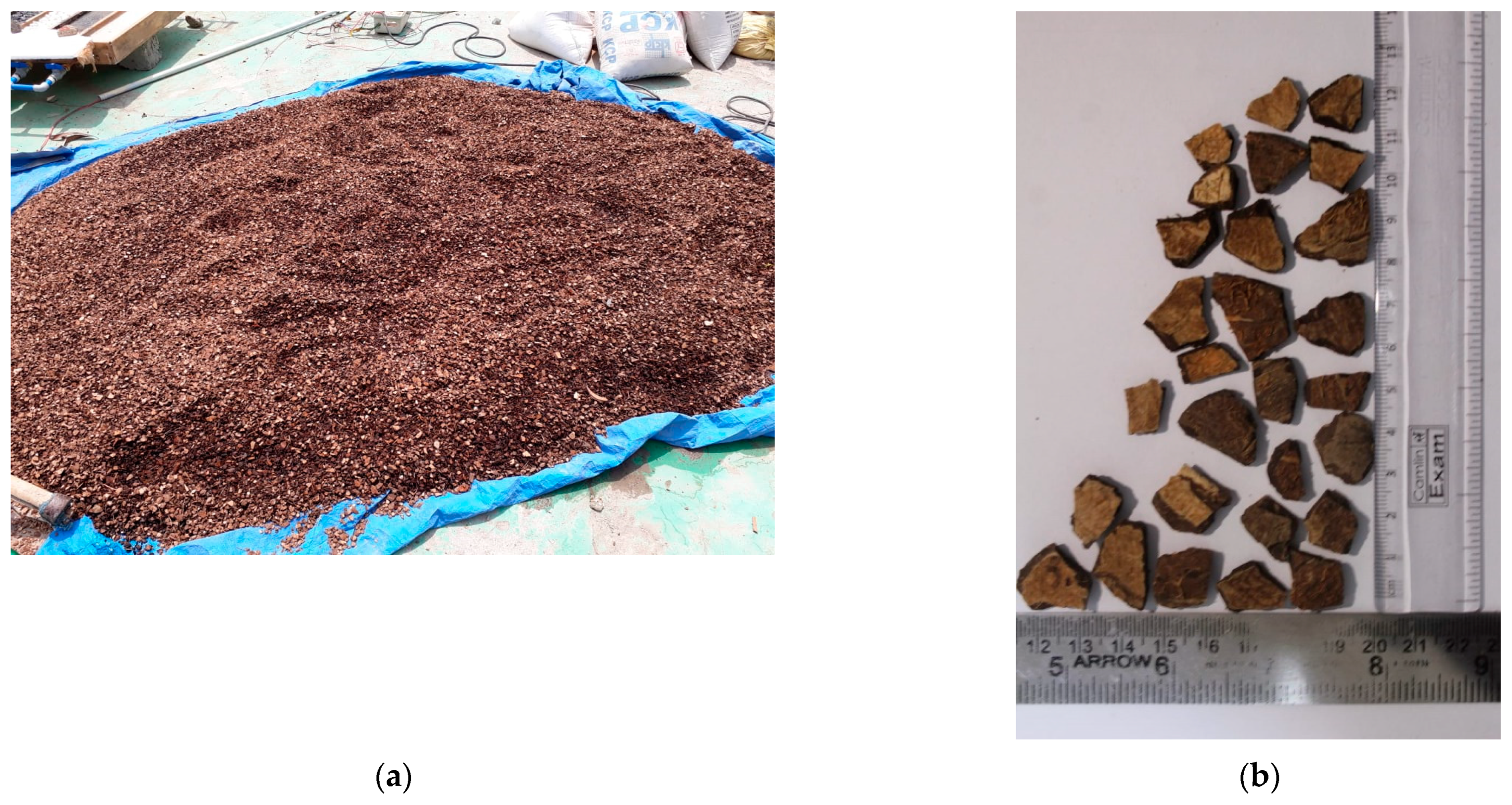
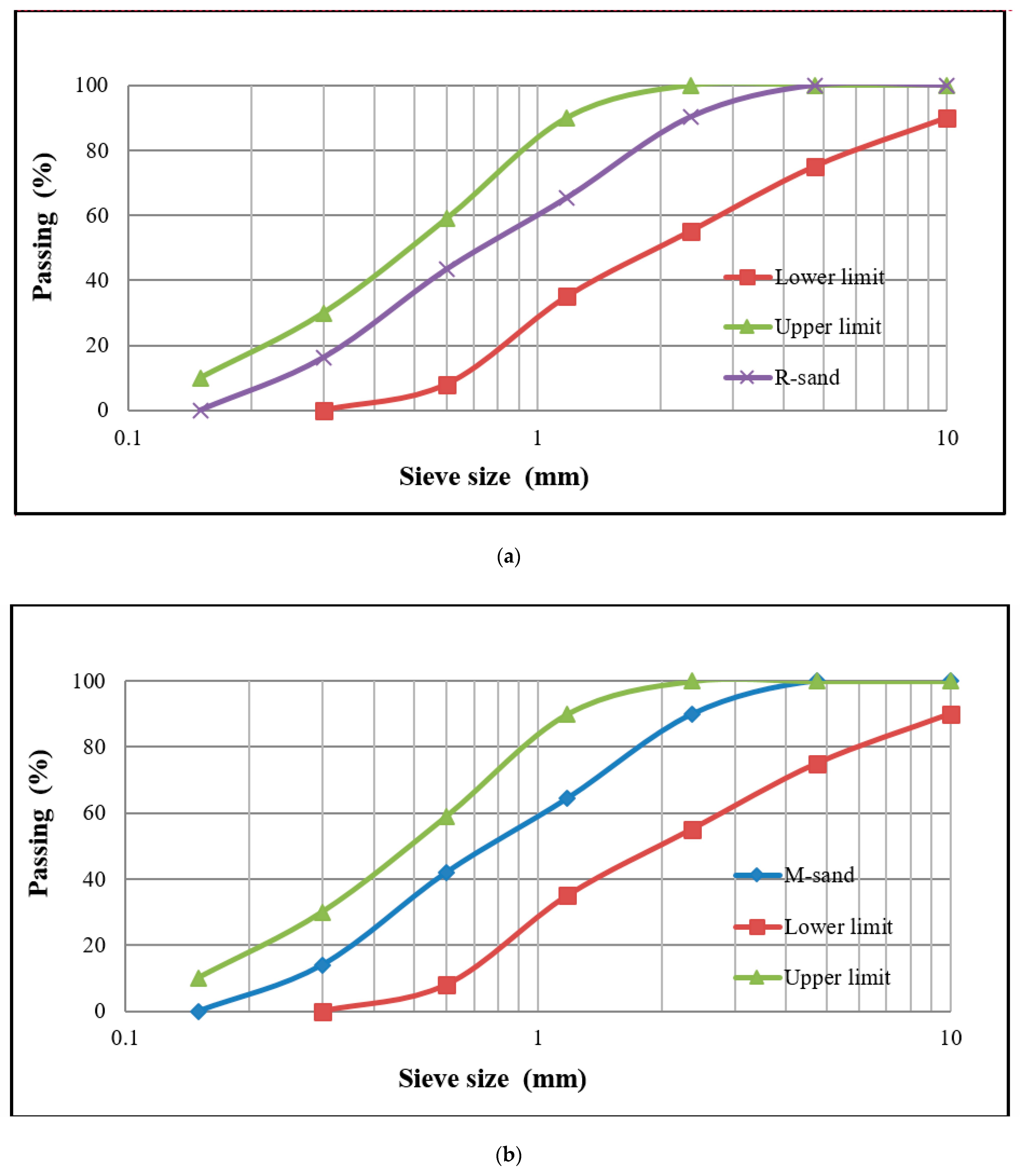
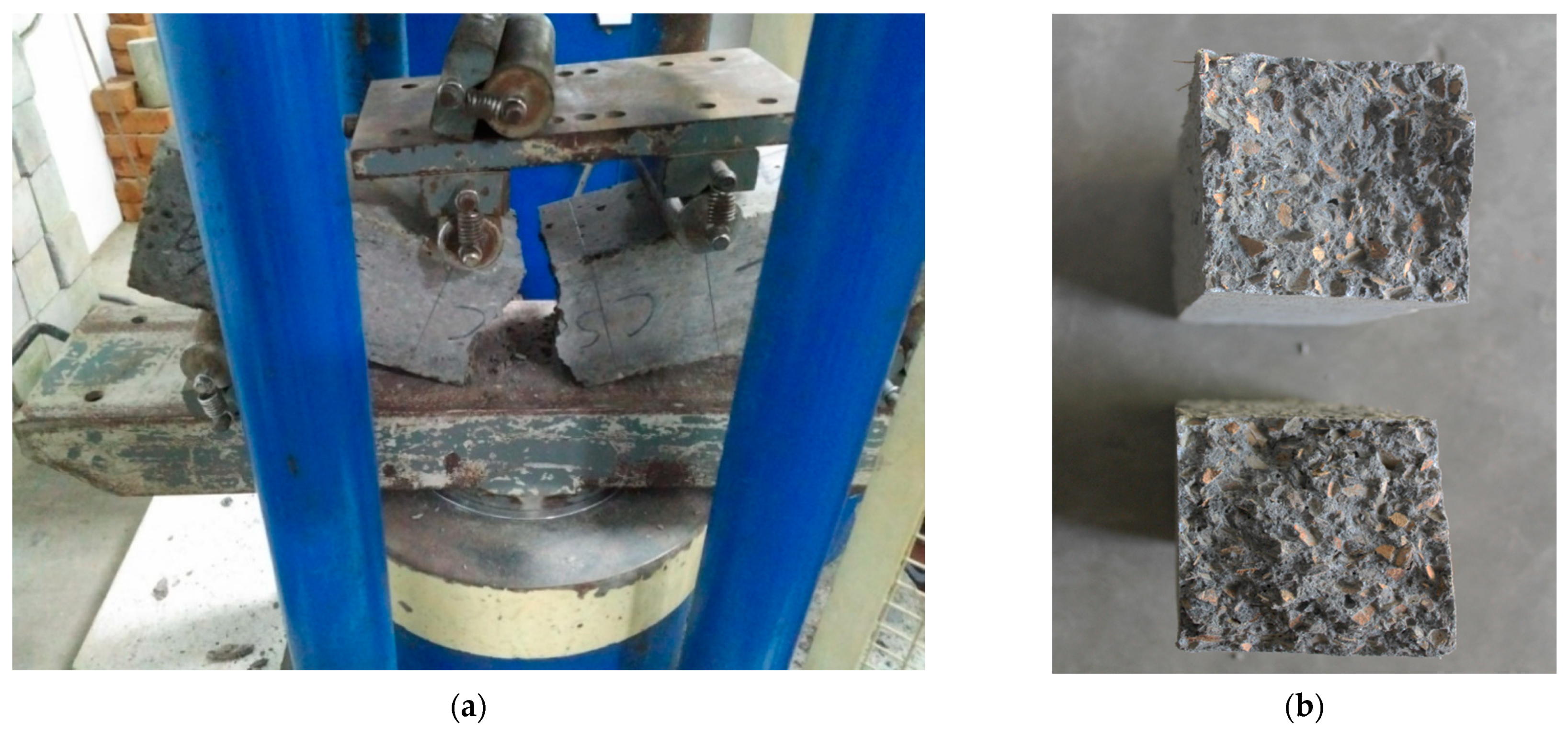




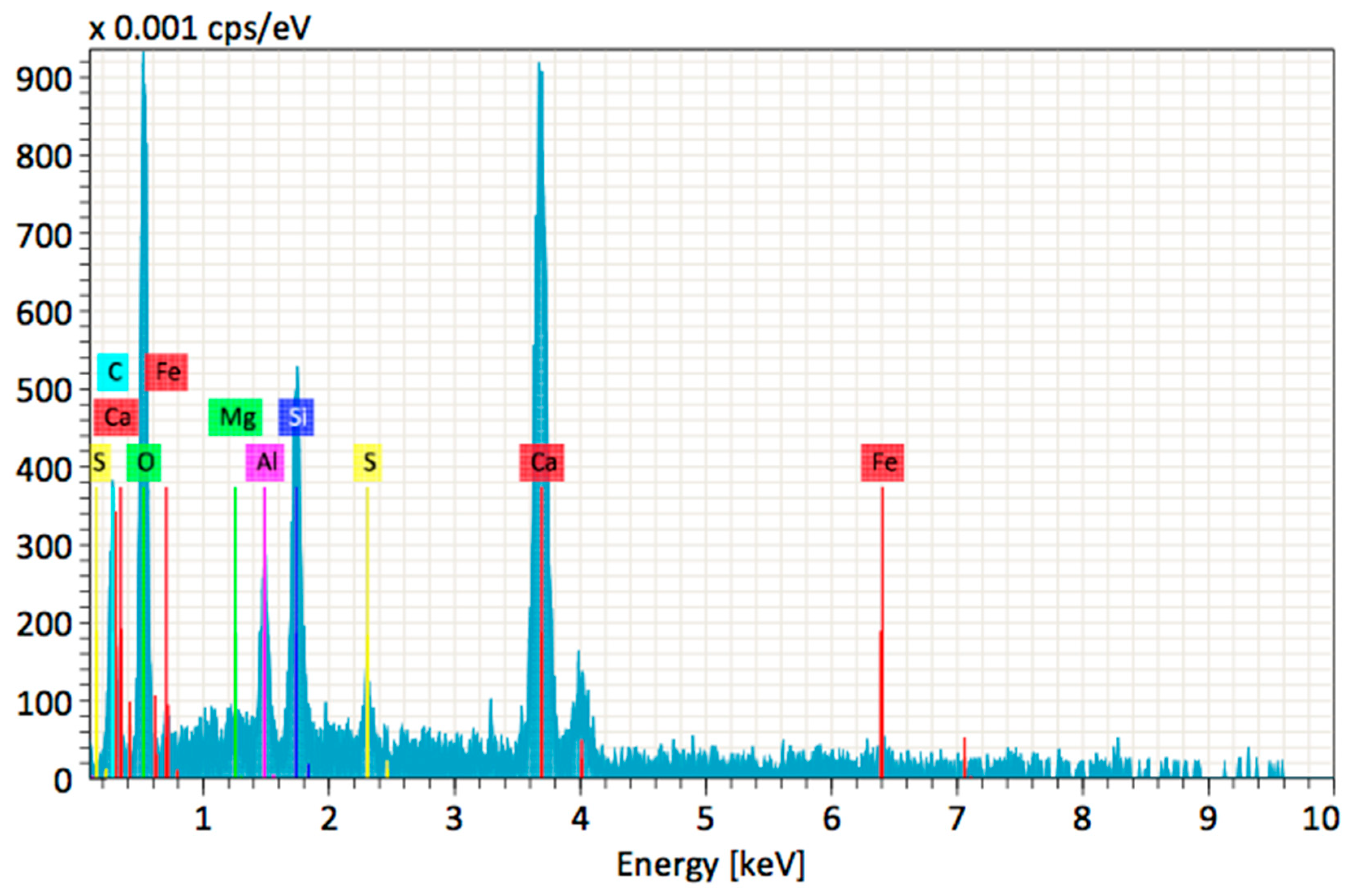

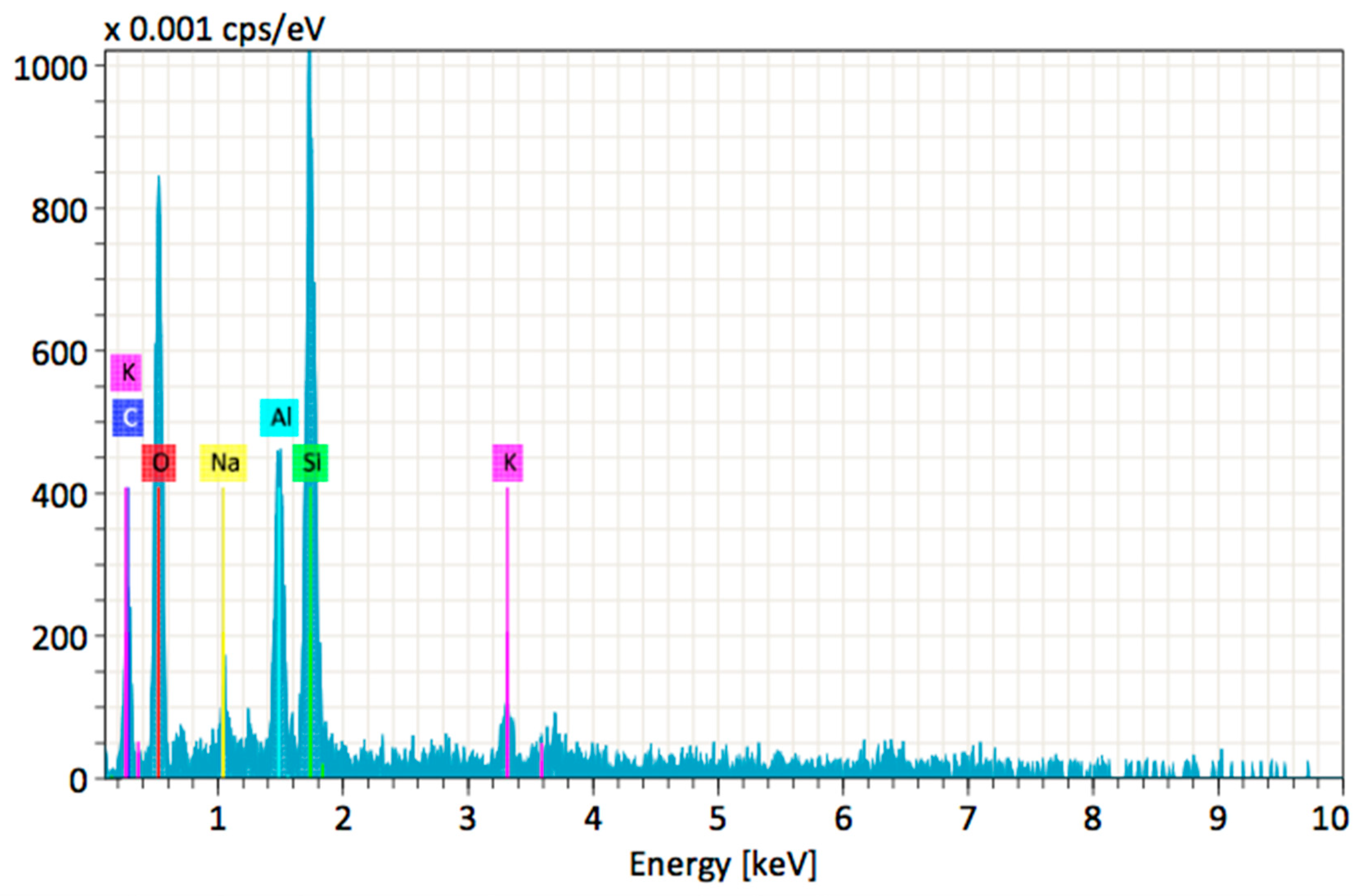
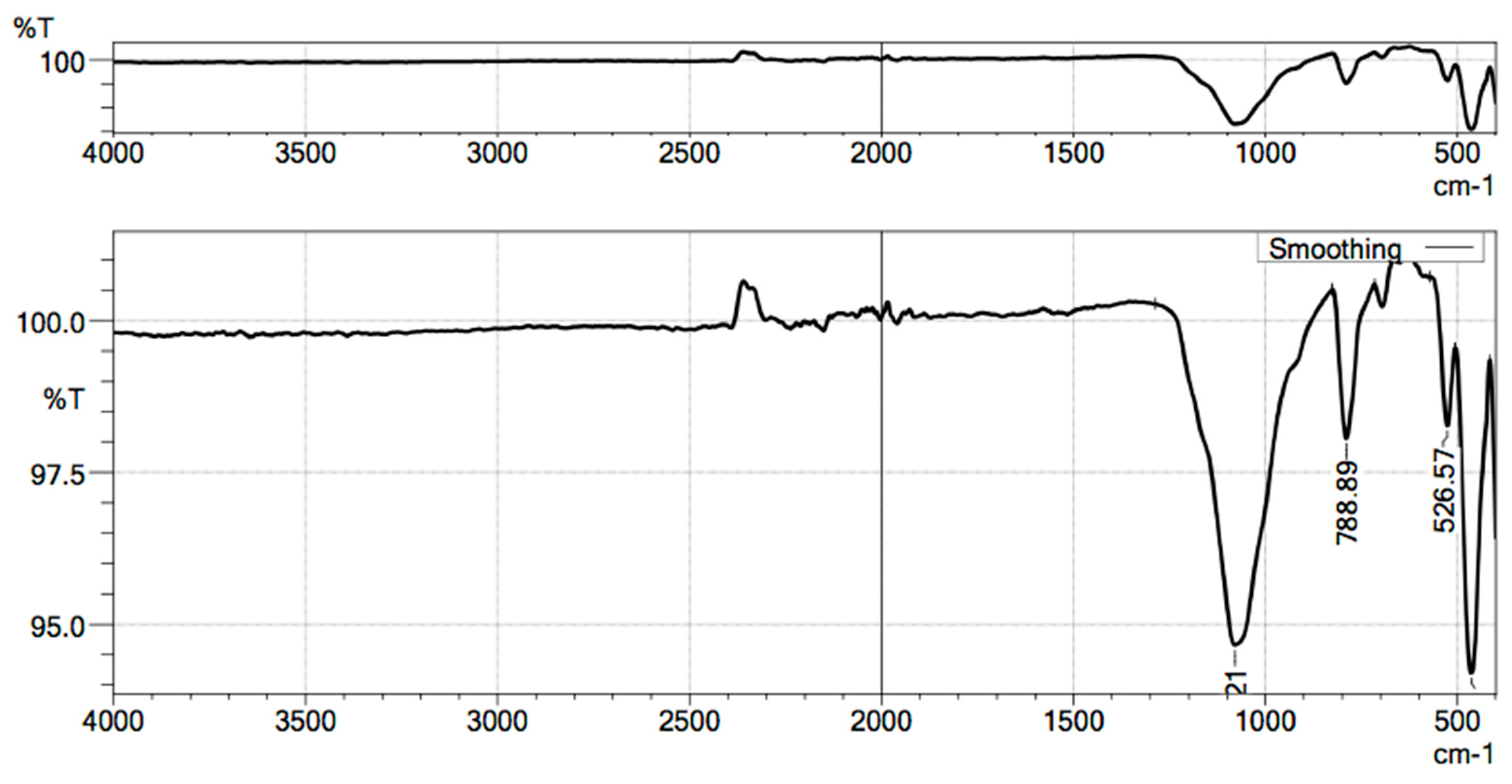


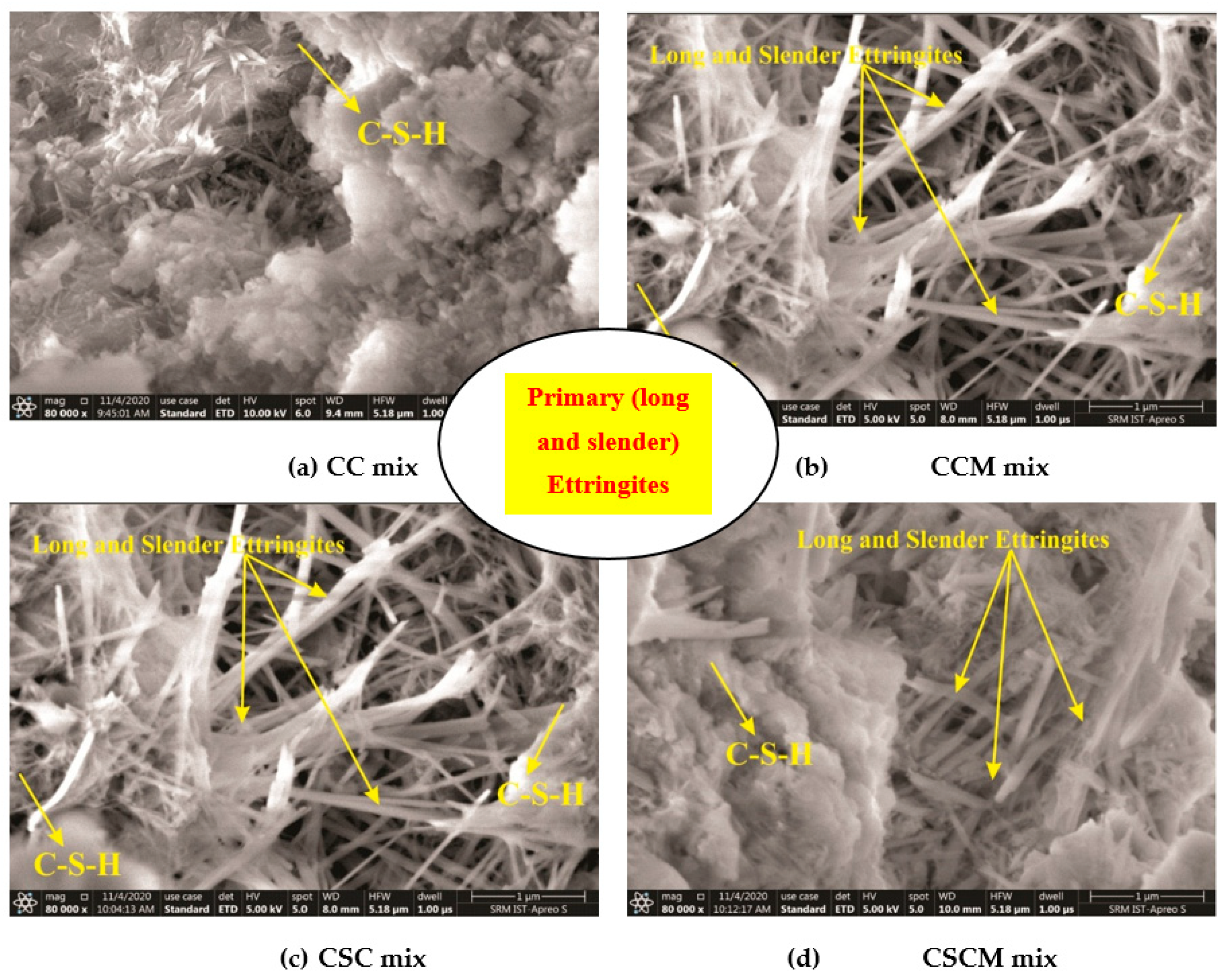
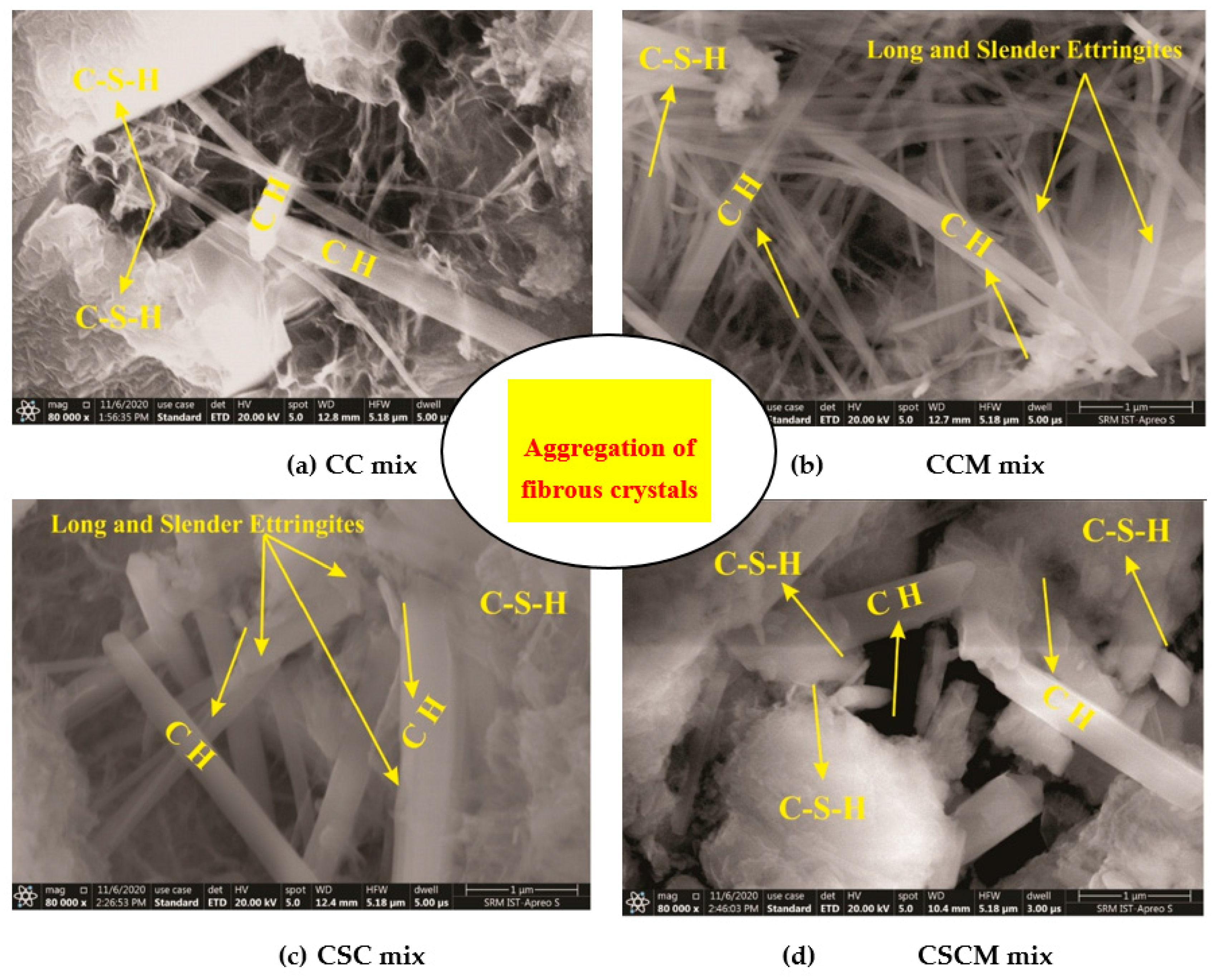


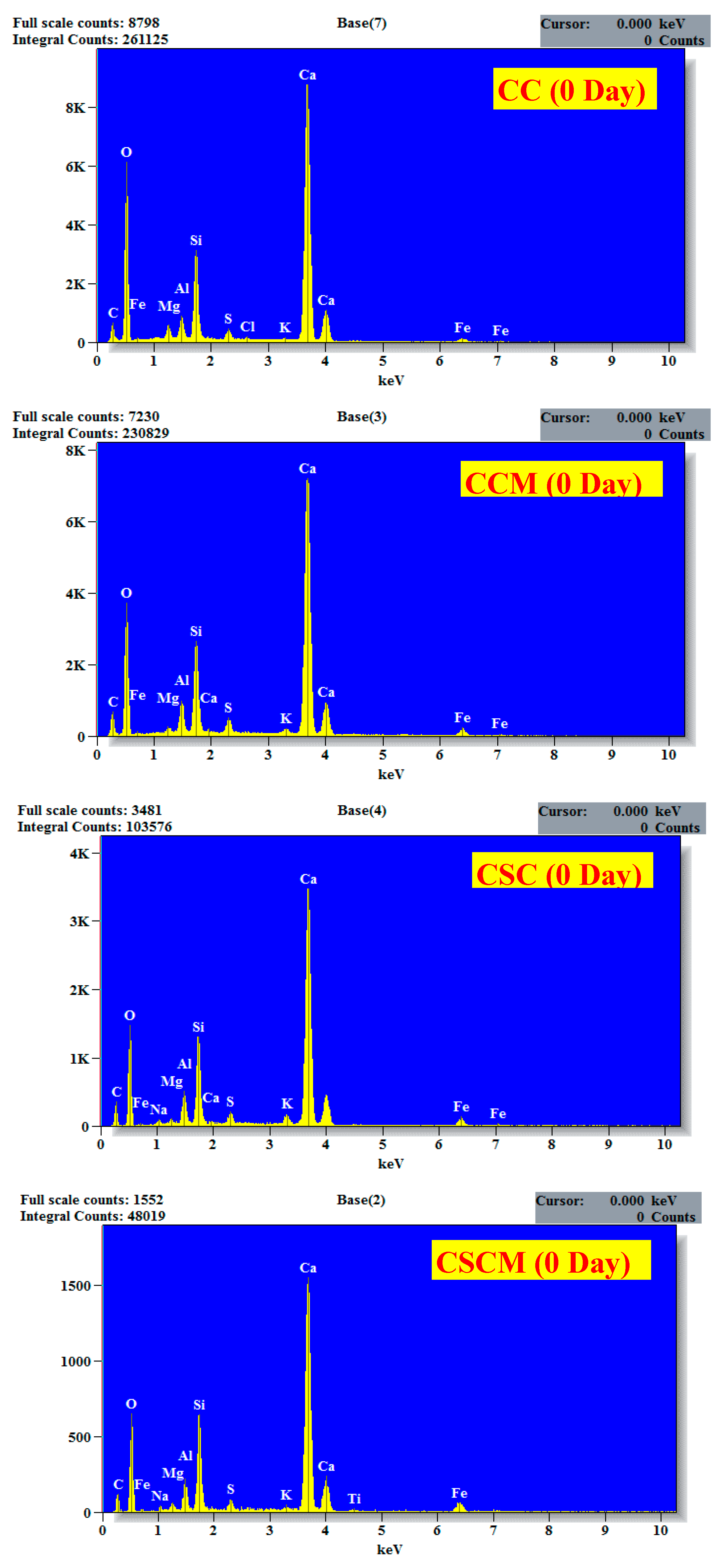




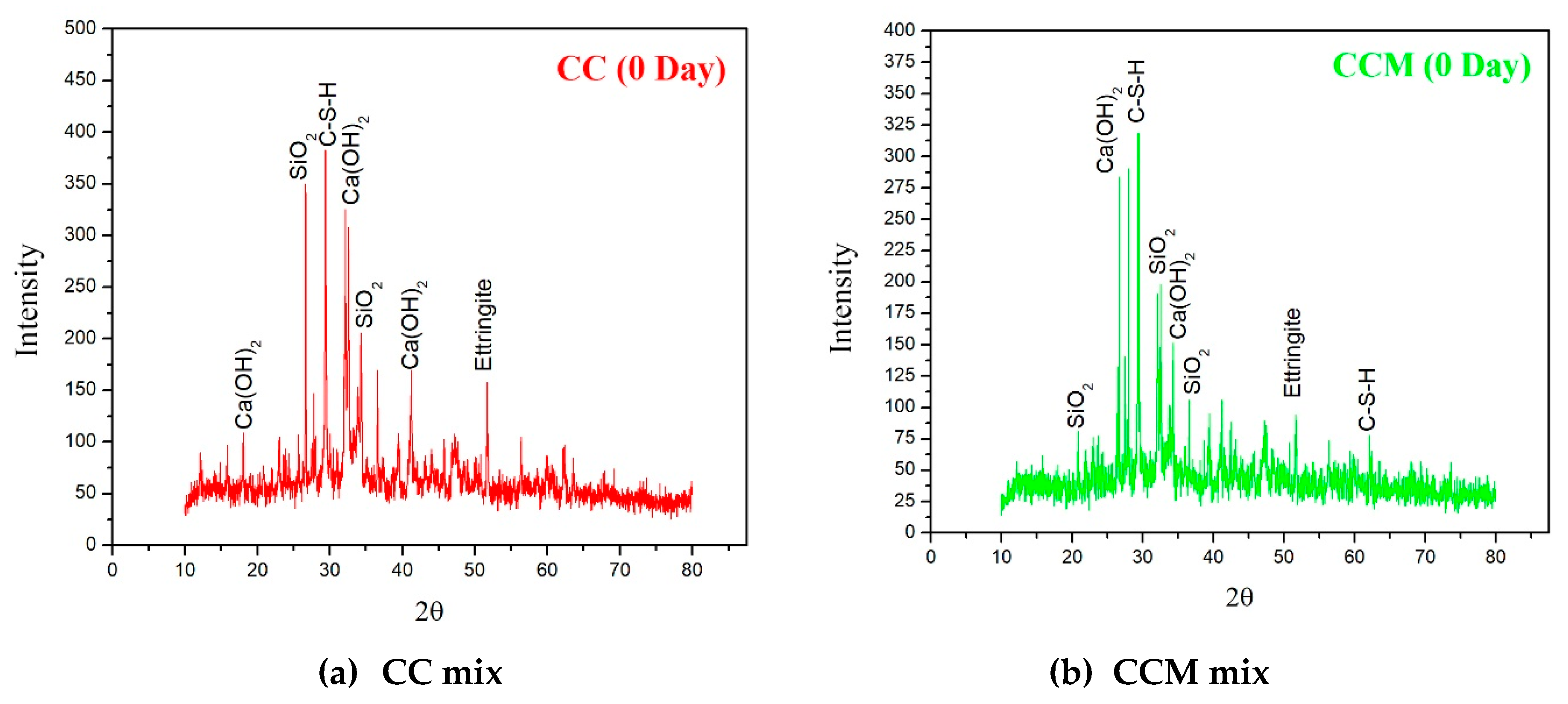
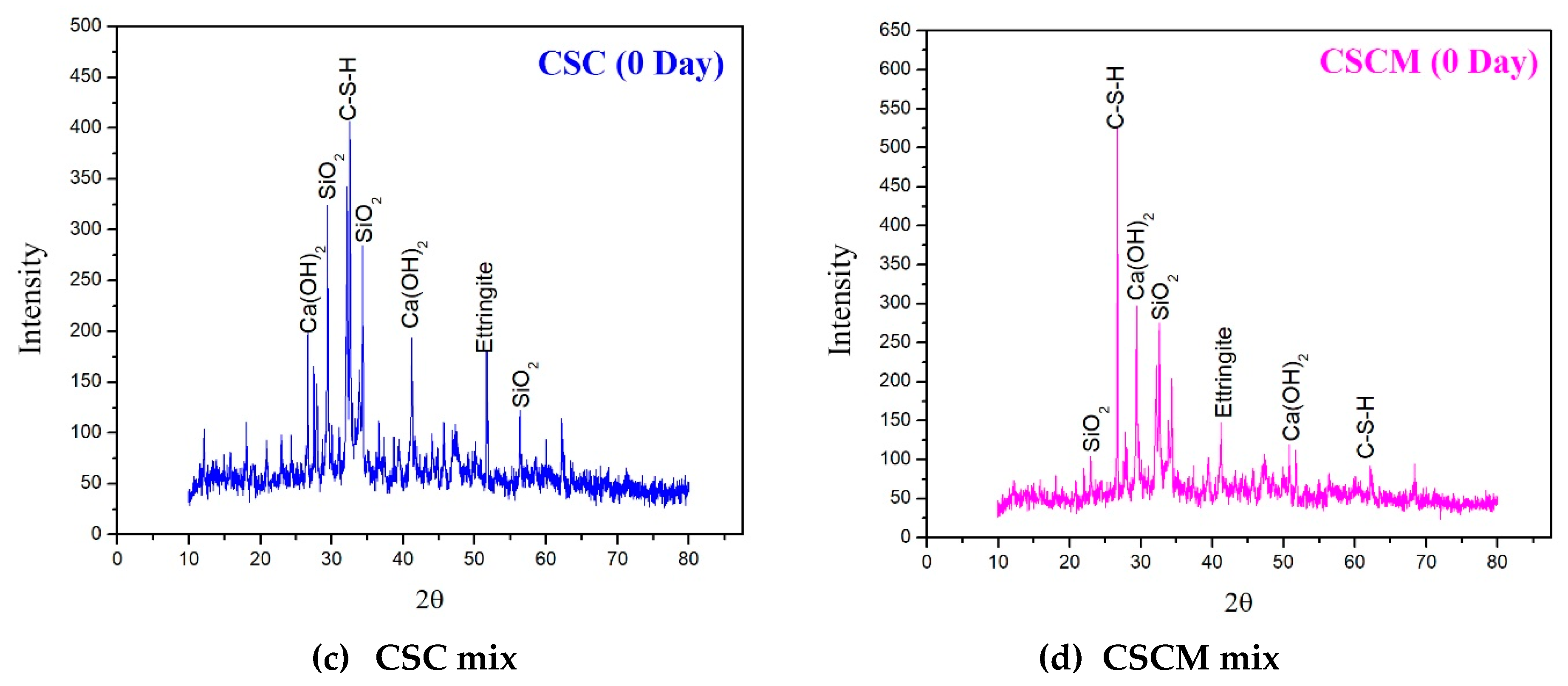
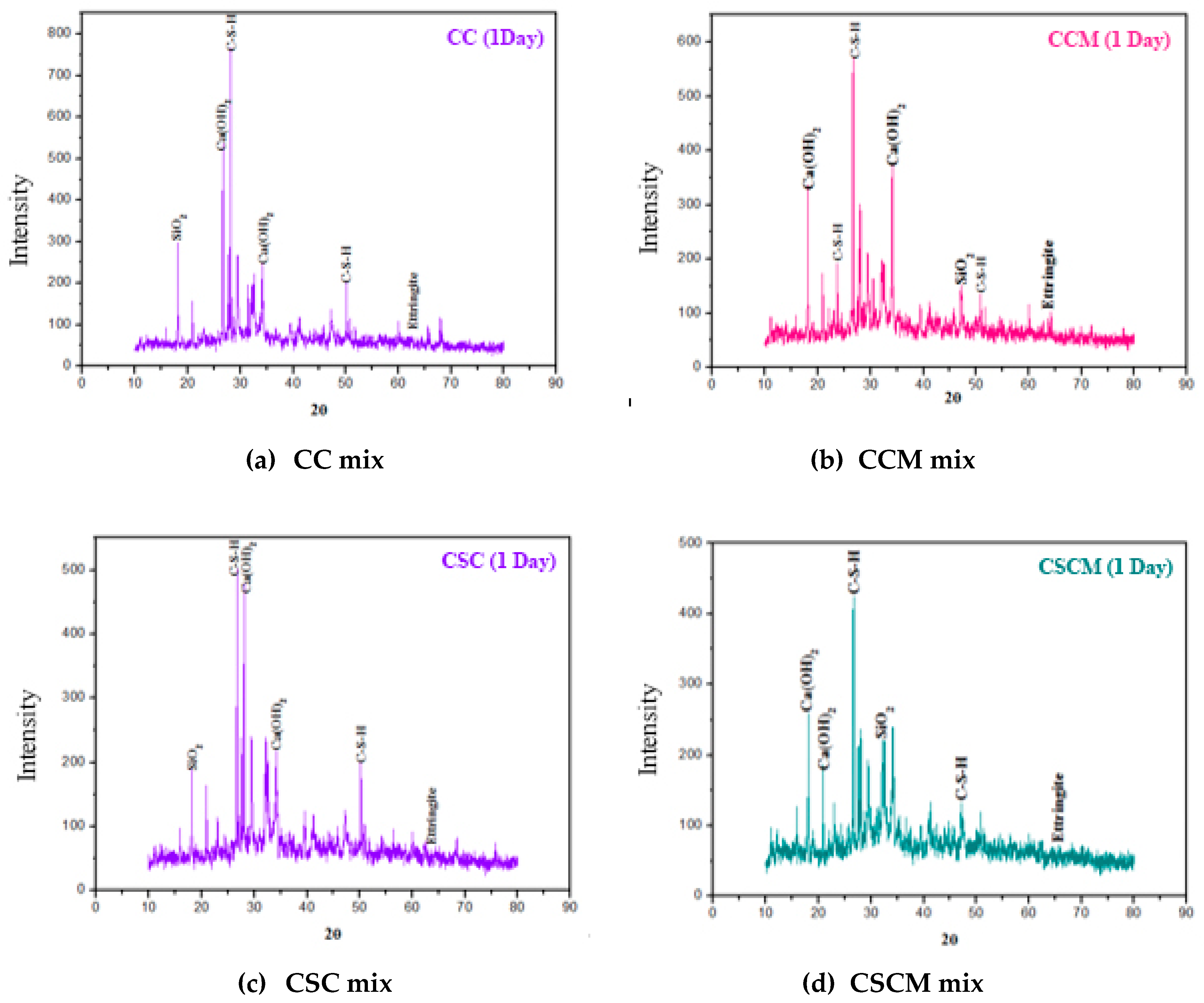

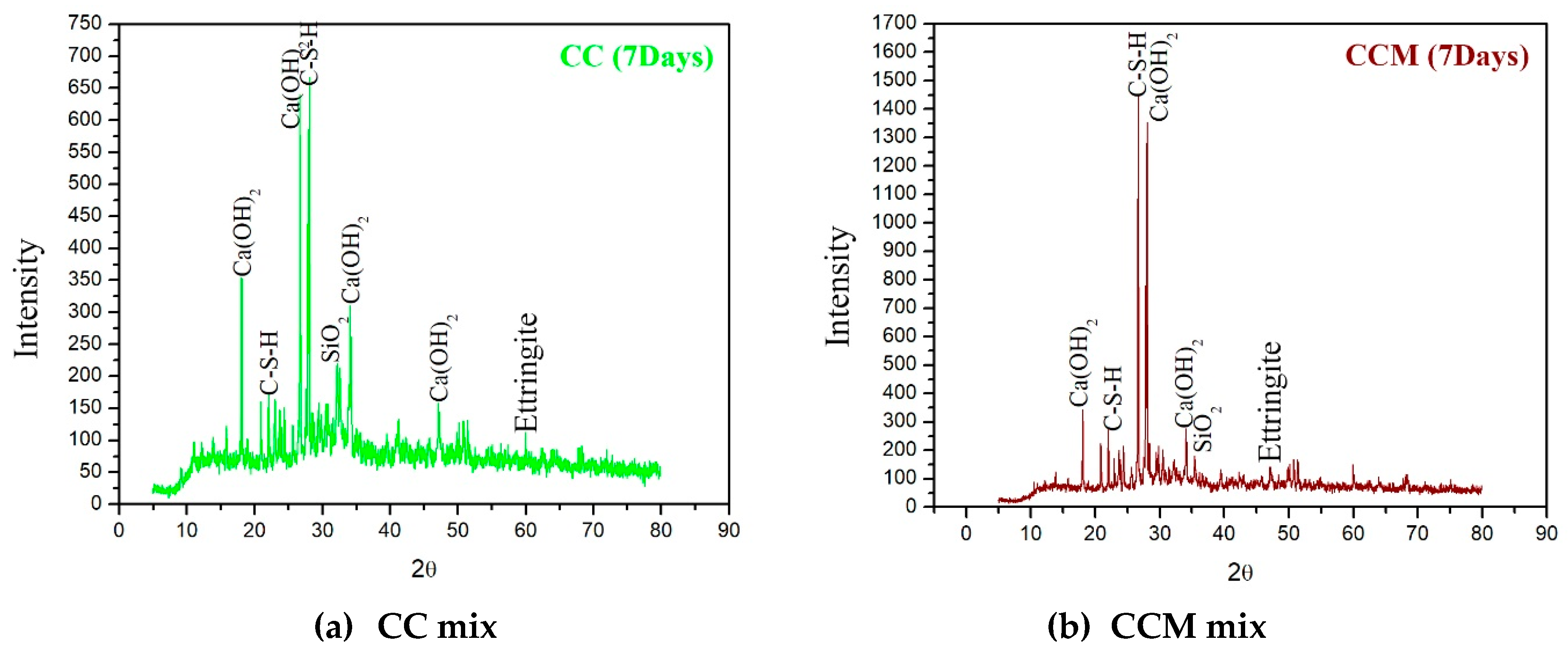
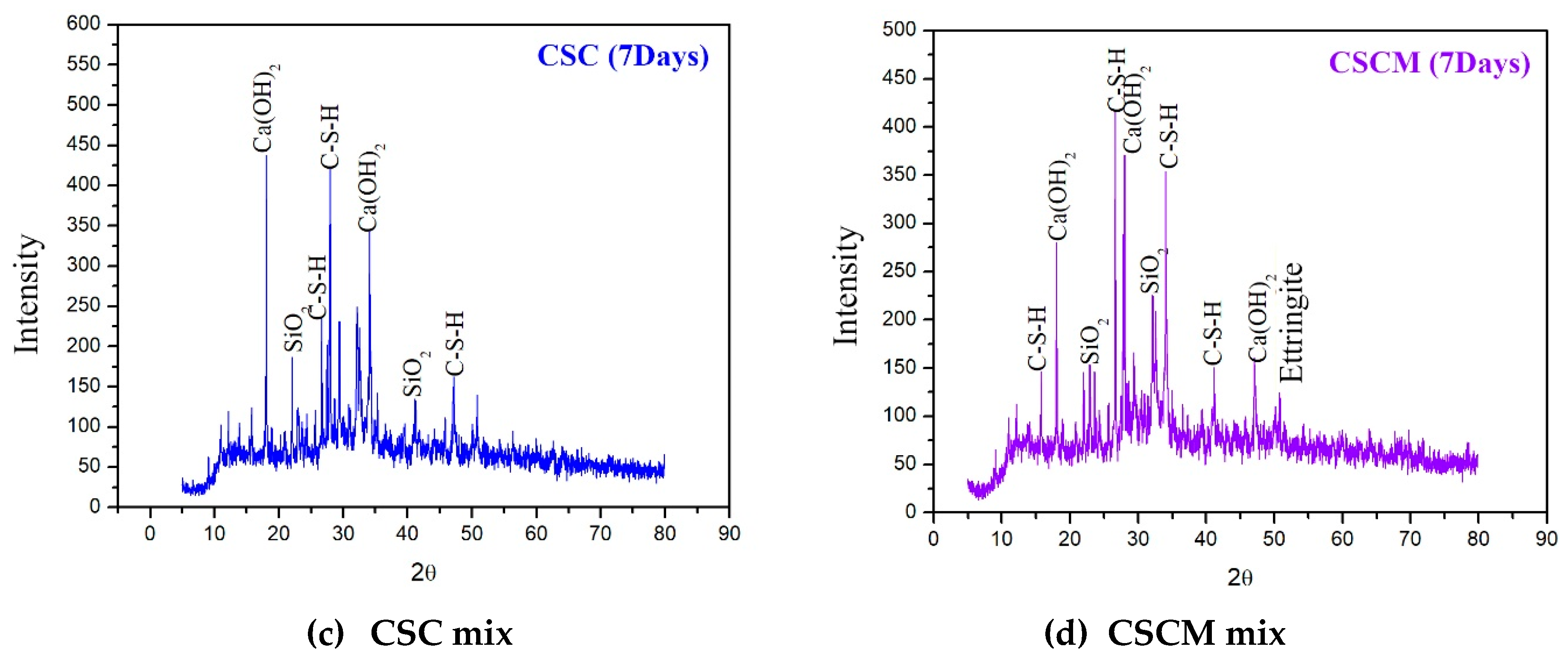

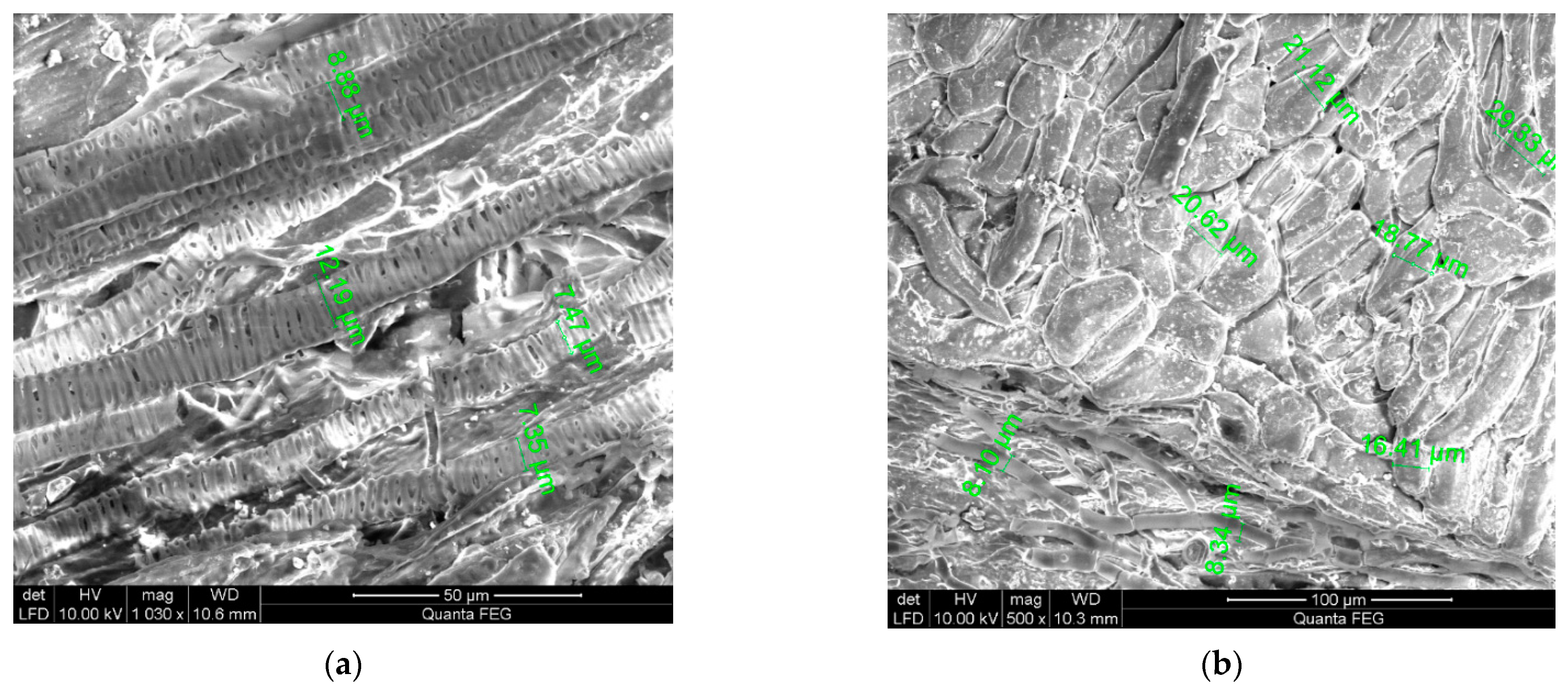


| Parameters | CSA | CS | R-Sand | M-Sand |
|---|---|---|---|---|
| Specific gravity | 2.83 | 1.14 | 2.63 | 2.66 |
| Bulk density (kg/m3) | 1660 | 645 | 1685 | 1710 |
| Fineness modulus | 6.66 | 6.05 | 2.84 | 2.89 |
| Chemical Composition (%) | OPC | R-Sand | M-Sand |
|---|---|---|---|
| Ca | 37.18 | 0.65 | - |
| O | 29.70 | 49.27 | 28.79 |
| Si | 8.03 | 26.69 | 22.83 |
| C | 7.10 | 6.44 | 15.25 |
| Fe | 3.78 | 6.29 | 6.38 |
| Al | 2.68 | 6.63 | - |
| S | 1.56 | 1.25 | - |
| Mg | 0.16 | 0.26 | - |
| K | - | 2.45 | 3.05 |
| Na | - | - | 1.17 |
| Others | 2.65 | - | - |
| Loss on ignition | 2.44 | - | - |
| Mixes | Ratio (Ca:Si) | ||||
|---|---|---|---|---|---|
| Zero Day | One Day | 3 Days | 7 Days | 28 Days | |
| CC | 3.58 | 3.07 | 2.57 | 1.94 | 1.86 |
| CCM | 3.43 | 2.95 | 2.49 | 1.93 | 1.71 |
| CSC | 3.28 | 2.86 | 2.38 | 1.91 | 1.69 |
| CSCM | 3.23 | 2.64 | 2.11 | 1.89 | 1.54 |
| Compounds (Peak Intensity) | Zero Day | One Day | 3 Days | 7 Days | 28 Days |
|---|---|---|---|---|---|
| CC Mix | |||||
| C-S-H | 350–400 | 750–800 | ˃2500 | 650–675 | 950–1000 |
| Ca(OH)2 | 300–325 | 500–550 | ˂500 | 350–375 | 750–800 |
| Ettringite | 150–175 | 100–150 | ˂250 | 100–125 | Nil |
| CCM Mix | |||||
| C-S-H | 300–325 | 550–600 | 375–400 | 1400–1450 | 900–950 |
| Ca(OH)2 | 275–300 | 350–400 | 225–250 | 1300–1350 | 600–650 |
| Ettringite | 075–100 | ˂100 | 100–125 | 100–150 | 100–150 |
| CSC Mix | |||||
| C-S-H | 400–425 | 450–500 | 475–500 | 400–425 | 400–425 |
| Ca(OH)2 | 200–225 | 400–450 | 350–375 | 425–450 | 250–275 |
| Ettringite | 175–200 | ˂100 | 125–150 | Nil | 150–175 |
| CSCM Mix | |||||
| C-S-H | 525–550 | 400–450 | 525–550 | 400–425 | 650–700 |
| Ca(OH)2 | 275–300 | 250–300 | 300–325 | 350–375 | 200–250 |
| Ettringite | 125–150 | 050–100 | 125–150 | 100–125 | 100–150 |
| Test Age | CC Mix | CCM Mix | CSC Mix | CSCM Mix | ||||
|---|---|---|---|---|---|---|---|---|
| Density (kg/m3) | Strength (N/mm2) | Density (kg/m3) | Strength (N/mm2) | Density (kg/m3) | Strength (N/mm2) | Density (kg/m3) | Strength (N/mm2) | |
| 3-days | 2440 | 16.95 | 2610 | 19.80 | 1965 | 16.80 | 2095 | 17.40 |
| 7-days | 2445 | 21.40 | 2620 | 25.65 | 1975 | 19.90 | 2110 | 22.30 |
| 28-days | 2535 | 28.80 | 2625 | 33.15 | 1995 | 26.95 | 2160 | 29.80 |
| Test Age | CC Mix | CCM Mix | CSC Mix | CSCM Mix | ||||
|---|---|---|---|---|---|---|---|---|
| Flexural strength (N/mm2) | ||||||||
| 3 days | 2.55 | 2.95 | 2.46 | 3.20 | ||||
| 7 days | 3.42 | 4.10 | 3.06 | 3.70 | ||||
| 28 days | 4.78 | 5.38 | 4.60 | 5.20 | ||||
| Splitting tensile strength (N/mm2) | ||||||||
| 3 days | 2.25 | 2.36 | 1.80 | 1.88 | ||||
| 7 days | 2.64 | 2.82 | 2.30 | 2.36 | ||||
| 28 days | 3.42 | 3.70 | 2.70 | 2.92 | ||||
| Impact resistance in (Joules) | ||||||||
| Initial crack | Final crack | Initial crack | Final crack | Initial crack | Final crack | Initial crack | Final crack | |
| 3 days | 159 | 179 | 198 | 218 | 218 | 278 | 298 | 377 |
| 7 days | 238 | 318 | 318 | 377 | 377 | 477 | 457 | 556 |
| 28 days | 318 | 417 | 397 | 477 | 497 | 636 | 616 | 735 |
| Characteristics | R-Sand | M-Sand |
|---|---|---|
| Surface structure | Smooth texture | Rough texture |
| Moisture | May be available | Not available unless it is wet sieved |
| Silt content | Possible to present 5–20% | Not available (0%) |
| Adulteration | More possibility | Less possibility |
| Over sizes | Cannot be avoided | Can be avoided |
| FTIR pattern | Similar patterns | |
| Bonding nature | Single bonding | |
| Cement hydration processes | Not affected | |
| Ratio (Ca: Si) at 28 days for CSA used concrete | 1.86 | 1.71 |
| Ratio (Ca: Si) at 28 days for CS used concrete | 1.69 | 1.54 |
| Segregation characteristics | Does not happened | |
| Workability | Increases | Decreases |
| Concrete density | Less | More |
| Concrete strength | Less | More |
Publisher’s Note: MDPI stays neutral with regard to jurisdictional claims in published maps and institutional affiliations. |
© 2021 by the authors. Licensee MDPI, Basel, Switzerland. This article is an open access article distributed under the terms and conditions of the Creative Commons Attribution (CC BY) license (http://creativecommons.org/licenses/by/4.0/).
Share and Cite
Ramasubramani, R.; Gunasekaran, K. Sustainable Alternate Materials for Concrete Production from Renewable Source and Waste. Sustainability 2021, 13, 1204. https://doi.org/10.3390/su13031204
Ramasubramani R, Gunasekaran K. Sustainable Alternate Materials for Concrete Production from Renewable Source and Waste. Sustainability. 2021; 13(3):1204. https://doi.org/10.3390/su13031204
Chicago/Turabian StyleRamasubramani, R., and K. Gunasekaran. 2021. "Sustainable Alternate Materials for Concrete Production from Renewable Source and Waste" Sustainability 13, no. 3: 1204. https://doi.org/10.3390/su13031204
APA StyleRamasubramani, R., & Gunasekaran, K. (2021). Sustainable Alternate Materials for Concrete Production from Renewable Source and Waste. Sustainability, 13(3), 1204. https://doi.org/10.3390/su13031204






